Garden Ideas to Cover Concrete: Transform Your Space with Greenery
Turning a plain concrete patio into a stylish and inviting garden space can be accomplished with a few creative ideas. Whether you’re looking to add greenery, texture, or color, there are various ways to enhance the look and feel of your concrete area.
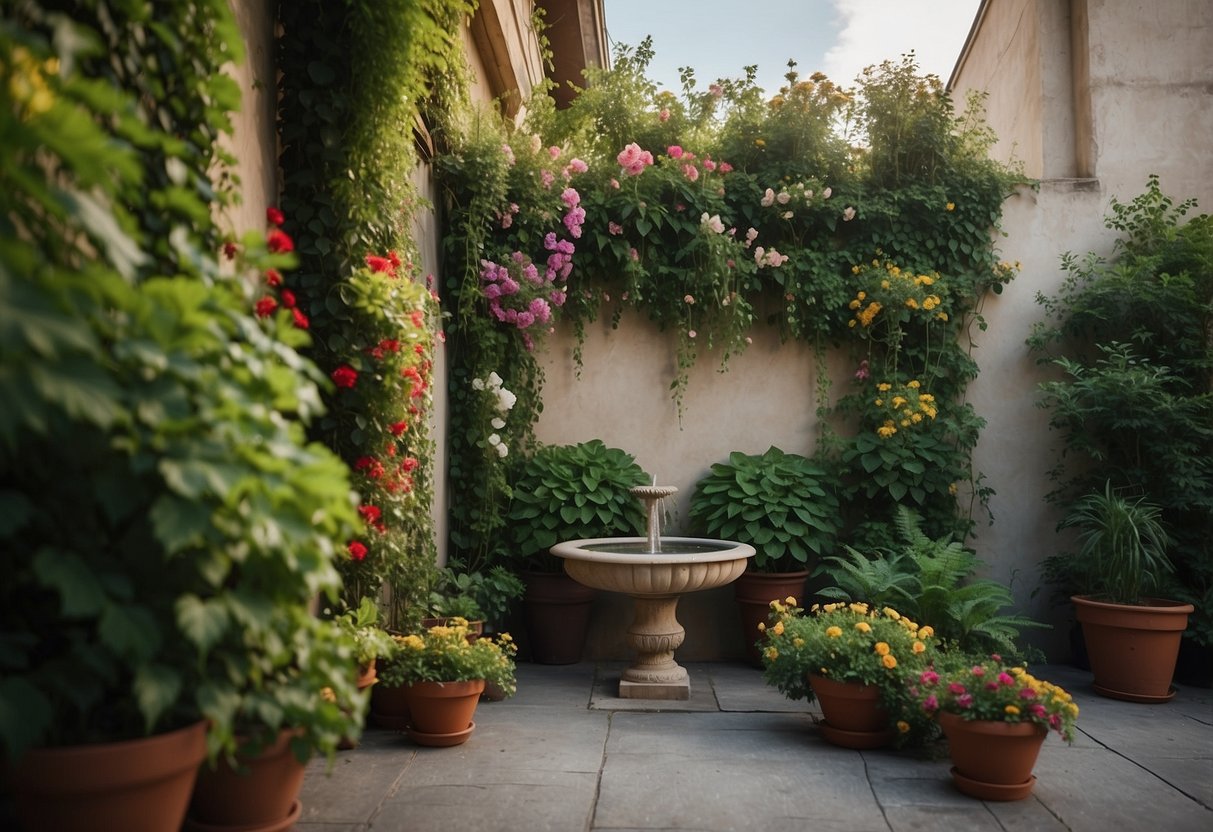
Wondering how to breathe new life into a lifeless patio? You’ll discover plenty of budget-friendly and practical solutions that can transform your outdoor space into a cozy haven. Dive in to find out how you can make your concrete patio a place you’ll love.
1) Install Wooden Deck Tiles

If you want to transform your concrete patio, consider installing wooden deck tiles. They are easy to install and add a warm, natural look to your outdoor space.
Start by cleaning your concrete surface thoroughly. Make sure it’s dry and free of debris.
Place the wooden deck tiles over the concrete, following the manufacturer’s instructions. Many wooden tiles are interlocking, making the job simple.
Wooden deck tiles provide essential ventilation, allowing moisture to escape. This helps prevent rot and damage to the underside of the tiles over time. For more details, 5 Ways to Cover Concrete Patio With Wood.
2) Lay Outdoor Rugs

Outdoor rugs can quickly transform your concrete patio into a cozy and stylish space. There are many colors, patterns, and sizes available, so you can find one that fits your style.
Outdoor rugs are easy to install. Simply roll them out over the concrete. It’s a quick and hassle-free way to upgrade your patio.
Outdoor rugs also provide comfort. They add a soft texture underfoot, making your patio more inviting. Additionally, they protect your concrete from wear and tear. This is a great option if you want something fast and effective.
3) Create a Pebble Mosaic

Transform your concrete space with a beautiful pebble mosaic. Start by mixing mortar until it reaches the consistency of thick pudding. Pour it onto your concrete, filling to half an inch below the desired level.
Next, place pebbles sideways, exposing their flat surfaces. Embed and press them close together into the mortar.
After 48 hours, clean off any loose mortar. For any remaining film, use clear water and, if needed, muriatic acid with a rag. This will give your garden a unique, artistic touch that stands out.
4) Set Up Raised Garden Beds

Creating raised garden beds on concrete is a great way to utilize space. These beds can help you control soil quality and minimize weed problems. Since they are elevated, they often face fewer pest problems too.
Make sure to protect the concrete surface. Using landscape fabric or plastic sheeting helps to keep the soil contained and prevent staining. Adding a proper drainage system is crucial to avoid water pooling.
Learn more about building raised beds on concrete here.
5) Place Potted Plants
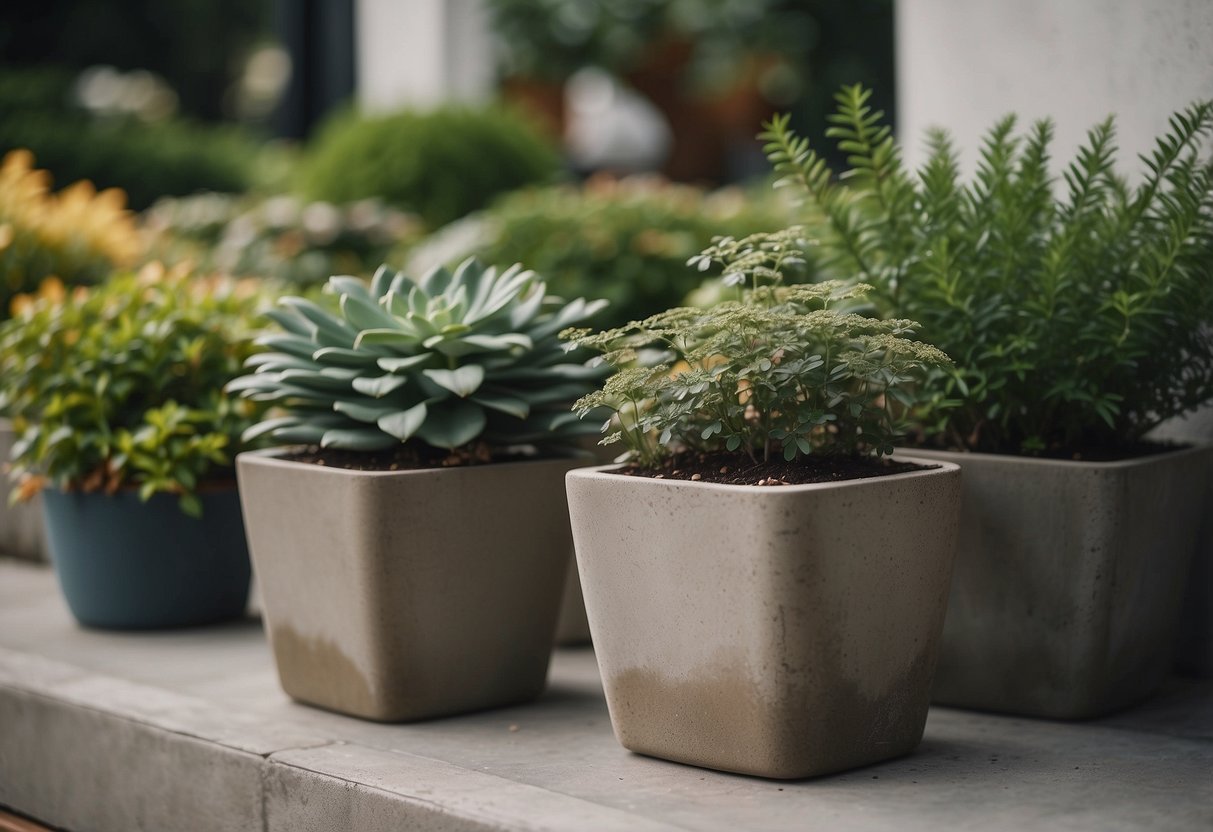
You can easily add life to your concrete space by placing potted plants. Choose colorful pots to make your area more vibrant. Large plants like palm trees can create a tropical vibe.
Mix different sizes and types of plants for variety. Useful herbs like rosemary or basil can be both decorative and practical. Grouping pots together can also create a cozy feel on your patio.
For more inspiration, check out these front yard landscaping ideas with potted plants.
6) Use Decorative Gravel
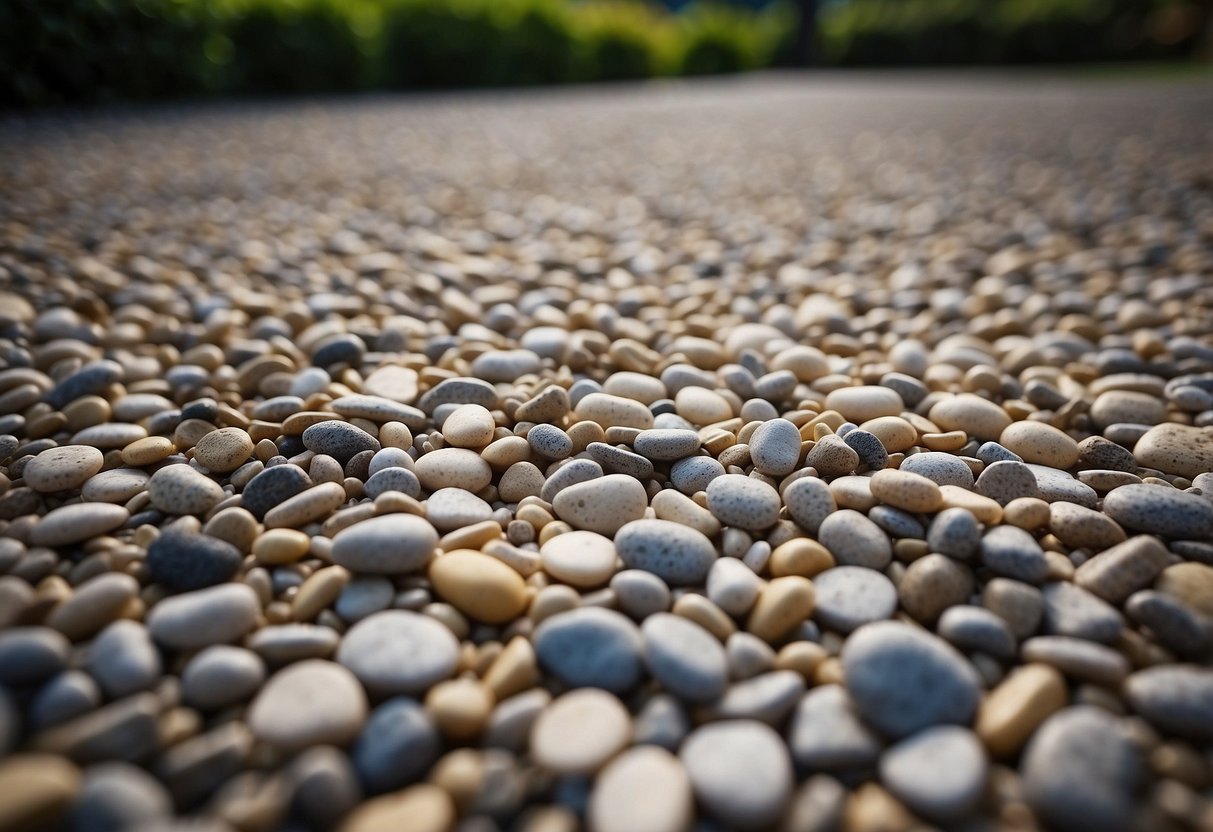
Decorative gravel can transform a concrete patio into a stylish space. It’s easy to lay and requires minimal upkeep. You can choose from various colors and sizes to match your garden theme.
Start by laying a weed barrier over the concrete. Spread a layer of gravel evenly across the area. You might also consider adding stepping stones for a unique look. For more ideas, check out these gravel garden ideas.
Decorative gravel not only looks great but also helps with drainage, keeping your patio dry and clean.
7) Build a Pergola with Vines

Building a pergola with vines can transform your concrete garden into a cozy, green haven.
Install the pergola over your patio and plant climbing vines at the base of the beams. Good choices include jasmine, wisteria, or grapevines.
As the vines grow, they will create a natural canopy, providing shade and a beautiful, lush atmosphere.
8) Add Outdoor Furniture

Adding outdoor furniture can transform your concrete patio into a cozy retreat. Start with comfortable seating, like sofas or lounge chairs, to create a relaxing area.
Use weatherproof materials to keep your furniture looking good year-round. Don’t forget to add a table for dining or a coffee table for drinks and snacks.
Bright cushions and throws can make the space inviting and colorful. Choose pieces that match your style and make your outdoor area feel like an extension of your home.
9) Incorporate a Water Feature
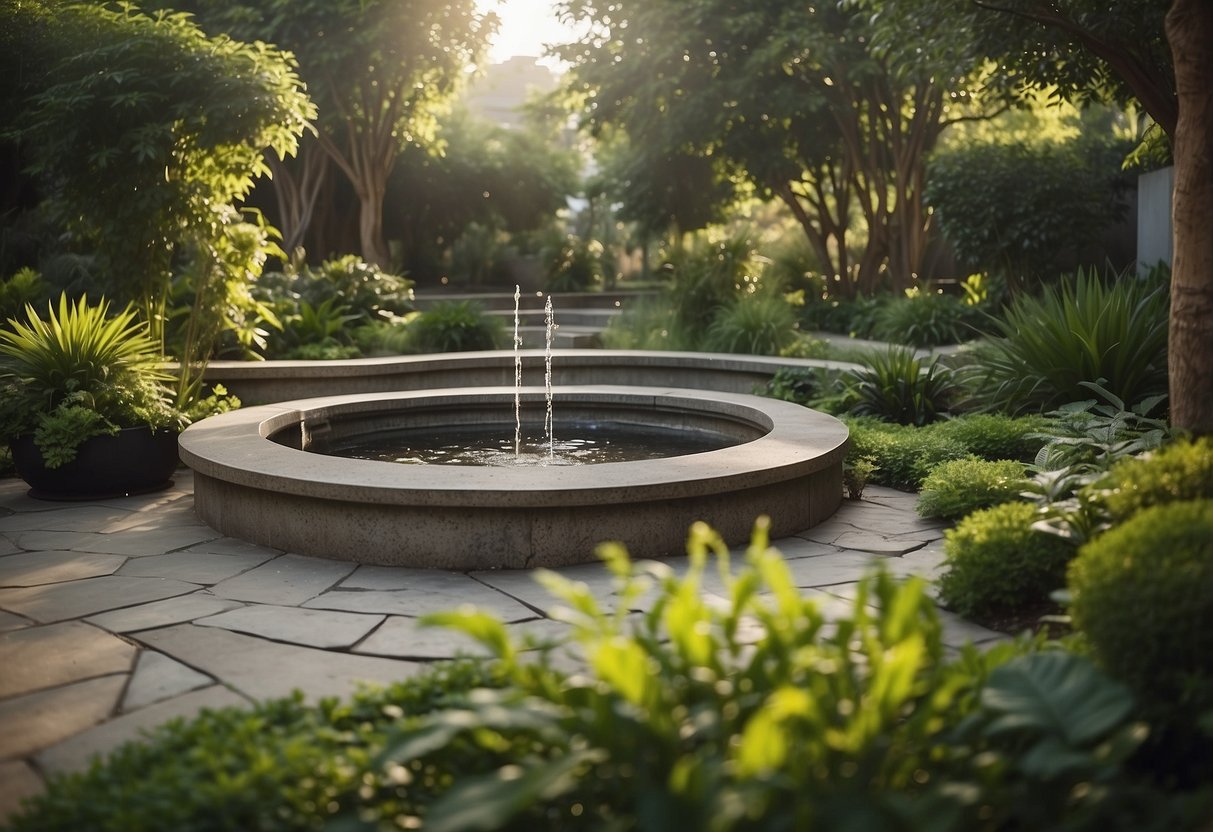
Adding a water feature is a great way to bring life and movement to your concrete garden. You might consider a simple fountain or even a small pond.
A modern garden pool can add a sleek look. For a quieter corner, a raised pond works well as a focal point.
These features create a soothing atmosphere and can be complemented with plants like evergreens and hostas for added color and charm.
10) Paint the Concrete Surface

Painting your concrete patio is a great way to give it a fresh new look. It’s affordable and allows you to get creative with colors.
Consider water-based acrylic paint, which starts at about $20 per gallon. It’s durable and comes in many colors.
Using stencils, you can create patterns like tiles, adding a unique touch to your space.
Understanding Concrete Surfaces
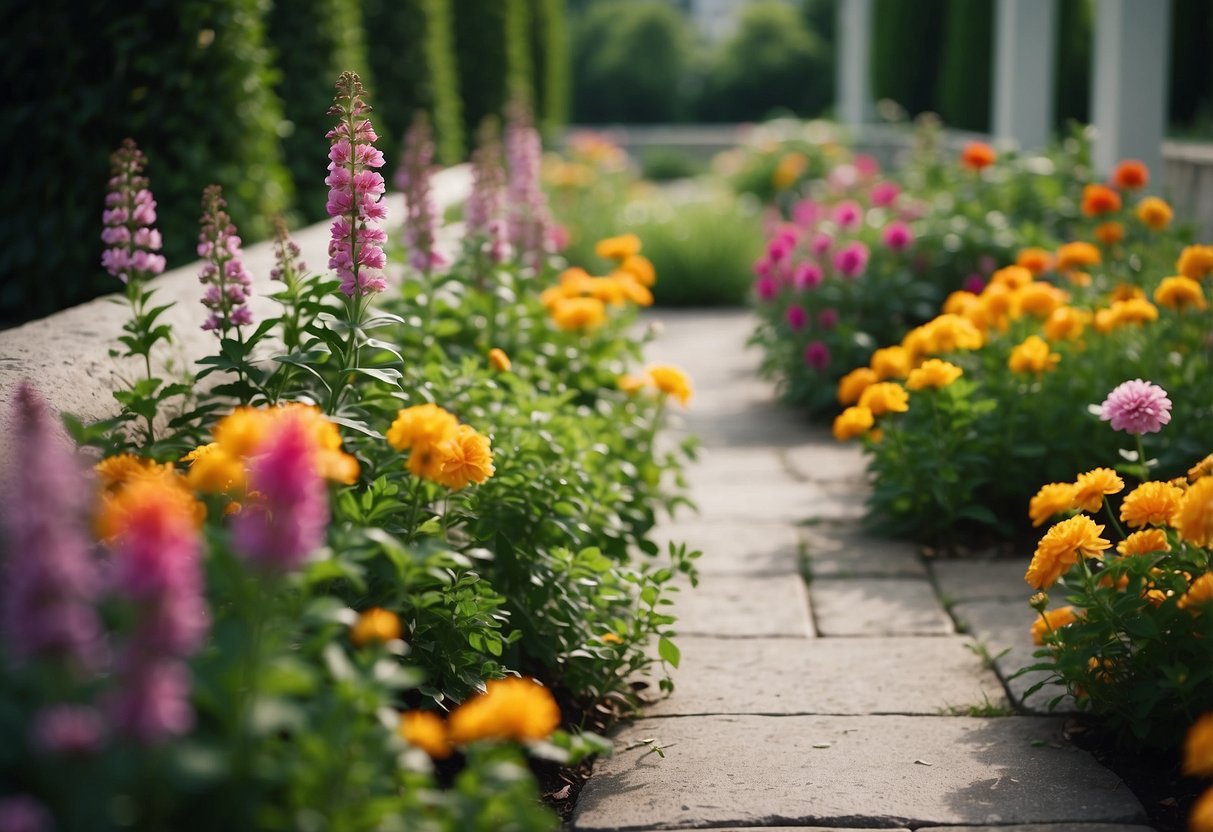
Concrete surfaces in gardens can be practical but often lack aesthetic appeal. Transforming these areas involves addressing specific challenges and appreciating the benefits of concrete enhancement.
Challenges of Covering Concrete
Concrete patios and walkways can be quite tough to cover due to their hard and sometimes uneven surfaces. One common issue is dealing with cracks or breaks that may have formed over time. These imperfections can interfere with placing new materials like tiles or pavers.
Drainage is another challenge, as you need a way for water to escape. Otherwise, water can pool, causing stains or even erosion. Preparing the surface might involve leveling it or adding a base layer to ensure a smooth finish and proper drainage.
Attachment or bonding of new materials to existing concrete can be tricky. Using adhesives requires the surface to be clean and compatible with the bonding agent. If these steps aren’t followed, the new layer may not hold up long-term.
Benefits of Enhancing Concrete Areas
Improving your concrete areas can drastically change the look and feel of your garden. One major benefit is increased durability. Materials like stamped concrete or epoxy coatings can make your surface more resistant to wear and tear.
Enhanced concrete also provides better aesthetics. For example, a stamped concrete overlay can mimic stone or wood, giving a fresh, natural appearance without the upkeep.
Additionally, these enhancements can make your garden safer. Adding textures or non-slip surfaces reduces the risk of slips and falls, especially when the concrete is wet. Transforming concrete can also raise your property’s value, making it more appealing to potential buyers.
Popular Transformative Garden Ideas

Turn your concrete space into a vibrant garden using innovative ideas like raised beds and water features.
Utilizing Raised Beds and Planters
Raised beds and planters are an excellent way to bring greenery to your concrete garden. They allow you to grow a wide variety of plants, from vegetables to flowers. Raised beds can be made from wood, metal, or even concrete blocks.
Use sturdy materials to build your beds, and fill them with high-quality soil. Consider the height of the beds, as taller ones are easier on your back when gardening.
Planters are also versatile and come in various shapes and sizes. They can be placed strategically to create a stunning visual effect. You can even repurpose old containers, making this an eco-friendly option.
Incorporating Water Features
Water features add a sense of tranquility to any garden. They can range from simple birdbaths to elaborate fountains. A water feature can also act as a focal point, drawing attention and adding a calming sound to the space.
You can create a small pond using a pre-formed liner or waterproof material. Add some aquatic plants and perhaps a few fish to make it lively. If space is limited, a wall-mounted fountain or cascading water features are excellent alternatives.
Maintenance is key, so make sure to keep the water clean and the feature in good working order.
Maintenance and Long-term Care

Keeping your garden in top shape requires regular attention. To help your garden thrive, you need to focus on preventing weed growth and protecting against erosion.
Preventing Weed Growth
Weeds can quickly take over if not managed properly. Begin with laying down a weed barrier fabric. This fabric blocks sunlight from reaching weed seeds, preventing them from growing.
Applying a thick layer of mulch or gravel on top can further deter weeds. Mulch also helps retain moisture, which is beneficial for your plants. Hand-pulling weeds is essential in areas where fabric or mulch isn’t used. For tougher spots, consider using a garden hoe or a weed torch.
Finally, regular maintenance is crucial. Spend some time each week inspecting and removing any new weeds to keep your garden looking great.
Protecting Against Erosion
Erosion can be a major issue, especially on sloped surfaces. Planting ground cover plants like creeping thyme or ivy can help. These plants have roots that stabilize the soil, reducing erosion.
Consider terracing your garden if you have a significant slope. Terraces create flat areas that slow water runoff. Installing retaining walls made of stone or brick can also be effective in holding soil in place.
Using organic solutions like compost or straw can help improve soil structure and keep it in place. Additionally, avoid over-watering and ensure proper drainage to prevent water from washing away soil.
Monitoring the garden regularly for signs of erosion and taking timely corrective actions will go a long way in maintaining the health of your garden.







